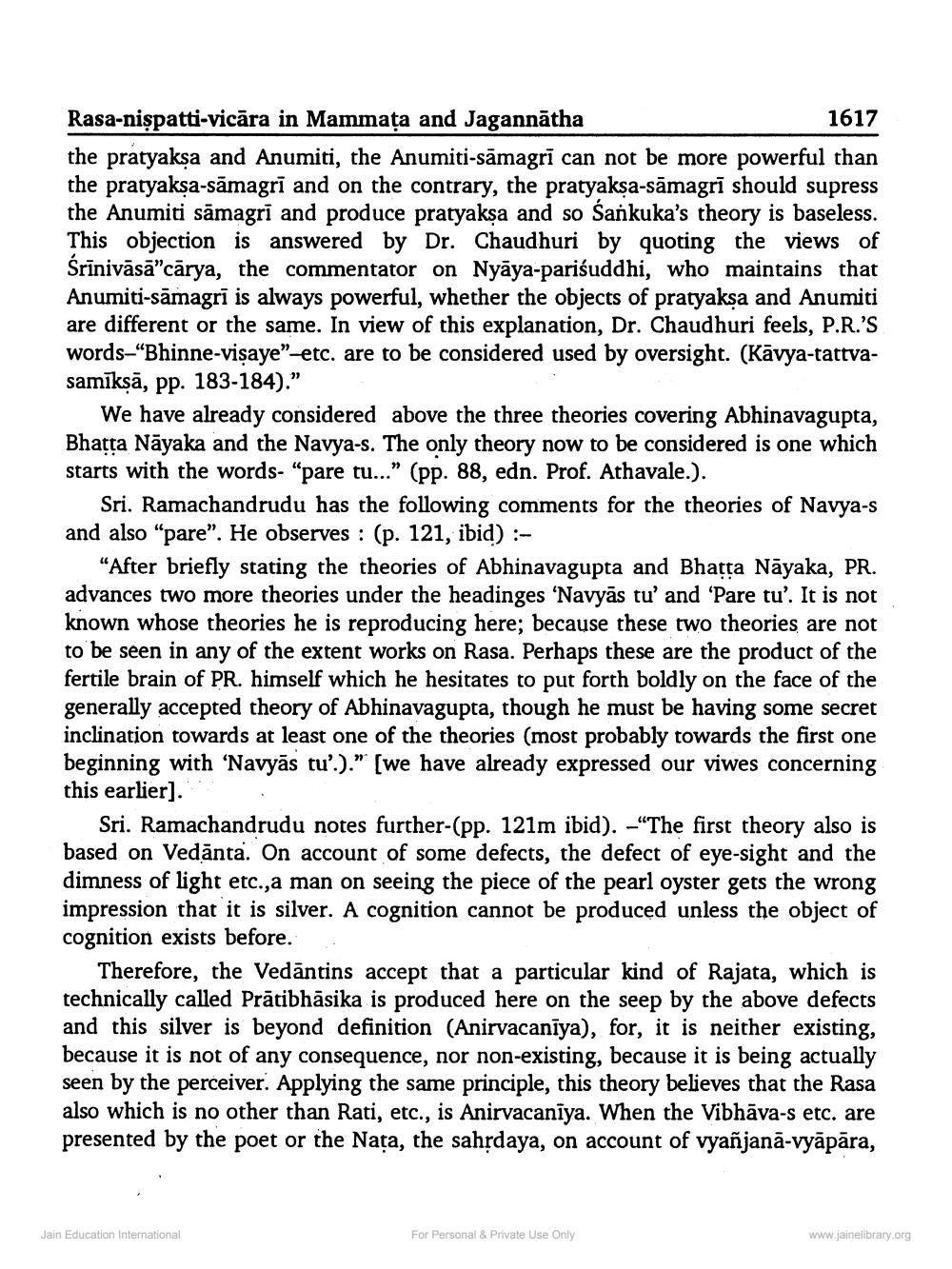________________
Rasa-nişpatti-vicāra in Mammaţa and Jagannātha
1617 the pratyaksa and Anumiti, the Anumiti-sāmagrī can not be more powerful than the pratyaksa-samagri and on the contrary, the pratyaksa-sāmagri should supress the Anumiti samagri and produce pratyaksa and so Sankuka's theory is baseless. This objection is answered by Dr. Chaudhuri by quoting the views of Srīnivāsā"cārya, the commentator on Nyāya-parisuddhi, who maintains that Anumiti-sāmagri is always powerful, whether the objects of pratyaksa and Anumiti are different or the same. In view of this explanation, Dr. Chaudhuri feels, P.R.'S words-“Bhinne-visaye" etc. are to be considered used by oversight. (Kavya-tattvasamīksā, pp. 183-184)."
We have already considered above the three theories covering Abhinavagupta, Bhatta Nāyaka and the Navya-s. The only theory now to be considered is one which starts with the words- "pare tu..." (pp. 88, edn. Prof. Athavale.).
Sri. Ramachandrudu has the following comments for the theories of Navya-s and also “pare". He observes : (p. 121, ibid) :
"After briefly stating the theories of Abhinavagupta and Bhatta Nayaka, PR. advances two more theories under the headinges 'Navyās tu' and 'Pare tu'. It is not known whose theories he is reproducing here; because these two theories are not to be seen in any of the extent works on Rasa. Perhaps these are the product of the fertile brain of PR. himself which he hesitates to put forth boldly on the face of the generally accepted theory of Abhinavagupta, though he must be having some secret inclination towards at least one of the theories (most probably towards the first one beginning with 'Navyās tu'.)." (we have already expressed our viwes concerning this earlier).
Sri. Ramachandrudu notes further-(pp. 121m ibid). “The first theory also is based on Vedānta. On account of some defects, the defect of eye-sight and the dimness of light etc.,a man on seeing the piece of the pearl oyster gets the wrong impression that it is silver. A cognition cannot be produced unless the object of cognition exists before. .
Therefore, the Vedāntins accept that a particular kind of Rajata, which is technically called Prātibhāsika is produced here on the seep by the above defects and this silver is beyond definition (Anirvacanīya), for, it is neither existing, because it is not of any consequence, nor non-existing, because it is being actually seen by the perceiver. Applying the same principle, this theory believes that the Rasa also which is no other than Rati, etc., is Anirvacanīya. When the Vibhāva-s etc. are presented by the poet or the Nața, the sahțdaya, on account of vyañjanā-vyāpāra,
Jain Education International
For Personal & Private Use Only
www.jainelibrary.org




